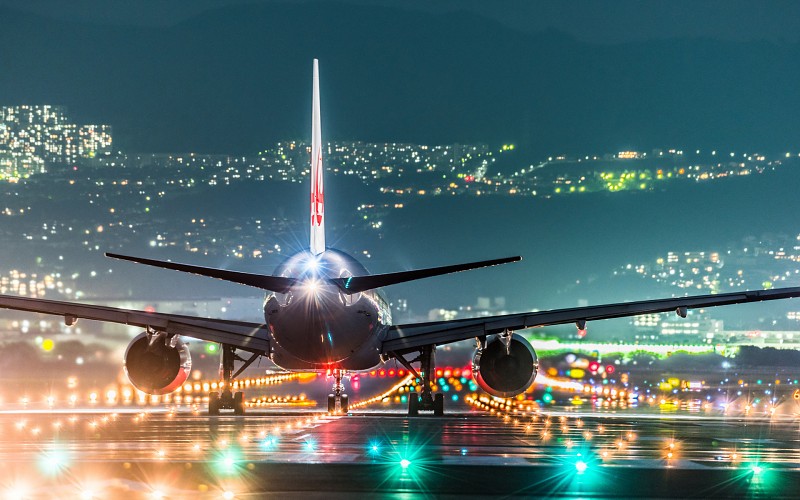ในอดีตเครื่องบินเจ็ทส่วนบุคคลเป็นสิ่งครอบครองโดยเหล่าเศรษฐีหมื่นล้านและบรรดาบุคคลที่มีชื่อเสียงเท่านั้น ให้ท่านผู้อ่านจินตนาการห้องเก็บสัมภาระที่อัดแน่นด้วยกระเป่าหลุยส์วิตตองขณะที่ห้องโดยสารก็เต็มไปด้วยนักธุรกิจกำลังกำหนดวาระการประชุมและทบทวนแผนการนัดหมายต่างๆ อย่างไรก็ดีความเปลี่ยนแปลงปรากฎให้เห็นได้ชัดในไม่กี่ที่ผ่านมา ตลาดเครื่องบินเจ็ทส่วนบุคคลเปิดตัวขึ้นโดยมีเทคโนโลยีเป็นตัวพลักดัน
ไม่ใช่เรื่องน่าแปลกใจที่จะใช้โทรศัพท์สมาร์ทโฟนเพื่อบุ๊คที่นั่งเฮลิคอปเตอร์ได้ภายใน 20 นาทีและในราคาเพียงเสี้ยวเดียวเมื่อเทียบกับการเช่าเหมาลำ โดยใช้บริการจากอูเบอร์เพียงแต่กำหนดที่รับและส่งที่เฮลิคอปเตอร์สามารถลงจอดได้ ธุรกิจออนดีมานด์ที่อาศัยหลักเศรษฐกิจแบ่งปันมีบทบาทมากในการแบ่งเบาสถานะการณ์ความคับคั่งในการเดิน Victor นับว่าเป็นบริษัทแรกที่รวบรวมข้อมูลเครื่องบินเจ็ทและสนามบินกว่า 40,000 แห่งทั่วโลก จากนั้นเปรียบเทียบเพื่อสร้างและนำเสนอราคาแก่ลูกค้าที่มีความต้องการใช้บริการเครื่องบินเจ็ทส่วนตัว และ Victor เติบโตถึง 139 เปอร์เซ็นต์เมื่อเทียบกับเมื่อปีที่แล้ว เป็นที่ประจักษ์แล้วว่า ความยืดหยุ่น ประสิทธิพลการบริหารต้นทุน ประสิทธิภาพทางเวลาในการเดินทาง ได้กลายเป็นวลีที่แห่งศตวรรษที่ 21
ยิ่งไปกว่านั้นในรอบ 5 ปีที่ผ่านมี app จำนวนหนึ่งนำเสนอบริการคล้ายกับ Victor ตัวอย่างเช่น JetSuite หรือไม่ว่าจะเป็น Surf Air หรือ SkyJet และมีบางเจ้าถึงขนาดนำเสนอบริการดังกล่าวในรูปแบบสมาชิกตอบกลับ สาเหตุที่ความต้องการบริการเครื่องบินเจ็ทส่วนบุคคลมีมากขึ้น ส่วนหนึ่งเป็นผลมาจากแถวรอคอยเพื่อการตรวจสอบความปลอดภัยที่มีความล่าช้า ความเหลื่อมล้ำด้อยประสิทธิภาพในแง่ของการบริหารจัดการของสนามบิน และความล่าช้าของตารางการบินที่เกิดขึ้นได้เสมอ สิ่งเหล่านี้ล้วนเป็นฝันร้ายของผู้โดยสาร
การจัดซื้อเครื่องบินเจ็ทเพื่อภาพลักษณ์และความภูมิฐานเป็นการแสดงสถานภาพทางสังคมของบรรดาอภิมหาเศรษฐีผู้มั่งมี บริษัทจำนวนไม่น้อยที่ใช้เครื่องบินเจ็ทส่วนตัวแม้ว่าจะต้องแบกรับภาระต้นทุนค่าใช้จ่ายจำนวนมหาศาล จากข้อมูลของ Corporate Jet Investor และ Forbes เมื่อพูดถึงสัดส่วนของบริการเครื่องบินเจ็ทส่วนตัวแล้ว พบว่า 63 เปอร์เซ็นต์ของธุรกิจดังกล่าวนี้ขึ้นทะเบียนในประเทศสหรัฐอเมริกาถ้านับเป็นจำนวนก็ประมาณ 12,000 ลำ รองลงมาก็คือประเทศบราซิลซึ่งมีจำนวนเครื่องบินเจ็ทที่ขึ้นทะเบียนไว้เป็นจำนวน 764 ลำ
สำหรับอภิมหาเศรษฐีแล้ว เรือยอร์ชและรถสปอร์ตเป็นสัญลักษณ์ที่แสดงถึงสถานภาพทางสังคม และเมื่อไม่นานมานี้เครื่องบินเจ็ทส่วนตัวก็ได้กลายมาเป็นส่วนหนึ่งของการประกอบสร้างสัญลักษณ์ดังกล่าวด้วย แม้ราคาเครื่องบินเจ็ทมีราคาสูง เช่นเครื่อง Gulfstream 451 ที่มีราคาถึง 41 ล้านเหรียญสหรัฐ หรือประมาณ 1,500 ล้านบาท ก็ไม่ได้ส่งผลต่อยอดขายในตลาดนี้เลยแม้แต่น้อย ตามรายงานของ Knight Frank ในส่วนของความมั่งคั่งพบว่า ในปี 2017 (เมื่อเทียบกับปี 2006) การจดทะเบียนเป็นเจ้าของเครื่องบินเจ็ทส่วนบุคคลเพิ่มขึ้นถึง 1,300 เปอร์เซ็นต์ในเบรารุสเพียงที่เดียว ในขณะที่พบการจดทะเบียนเครื่องบินดังกล่าวในสหภาพยุโรปตะวันมีจำนวนเพียง 13 ลำในปี 2017 และเพียง 1 ลำในปี 2006
สำหรับภูมิภาคเอเชียนั้น การเดินทางด้วยเครื่องบินเจ็ทส่วนตัวส่วนใหญ่แล้วเป็นไปเพื่อการเดินทางเพื่อประกอบธุรกิจในกลุ่มประเทศเศรษฐกิจที่เติบโตได้แก่ เวียดนาม มาเลเซีย ไทย อินโดนีเซีย และกัมพูชา อันเป็นพื้นที่อุตสาหกรรมการที่กำลังเบ่งบานและดึงดูดนักลงทุนมาจากทั่วทุกมุมโลก แต่อย่างไรก็ดีนับว่าเป็นก้าวกระโดดของตลาดเครื่องบินเจ็ทส่วนตัวในประเทศจีน ที่เห็นได้ชัดคือมีจำนวนผู้ประกอบการใหญ่ในตลาดดังกล่าวเพิ่มขึ้นถึง 4 เท่าภายใน 4 ปี ยิ่งไปกว่านั้น มีแหล่งรายงานว่าในปัจจุบันมีเศรษฐีหมื่นล้านในประเทศจีนเป็นจำนวนถึง 652 ราย และจะมีจำนวนสนามบินก่อสร้างขึ้นใหม่ถึง 500 แห่งภายในปี 2020 ซึ่งจะนำไปสู่การแข่งขันที่ดุเดือนในกลุ่มธุรกิจดังกล่าวนี้มาก
สำหรับในประเทศจีนแล้ว ในช่วง 10 ที่ผ่านมา มีการจดทะเบียนเครื่องบินเจ็ทเป็นจำนวนถึง 215 ลำ ซึ่งนับว่าเพิ่มขึ้นจากที่มีอยู่เดิมถึง 347 เปอร์เซ็นต์เมื่อเทียบสถิติจากปี 2006 ปัจจุบันมีเครื่องเจ็ททั้งหมดในประเทศจีนอยู่เป็นจำนวน 277 ลำ ถึงแม้ว่าตัวเลขดังกล่าวในประเทศจะดูว่ามากแต่ยังไม่มากถึงที่สุด สำหรับประเทศสหรัฐอเมริกานั้นมีการจดทะเบียนเพิ่มขึ้นเพียง 34 เปอร์เซ็นต์ในปี 2017 เมื่อเทียบกับปี 2006 แต่จำนวนการจดทะเบียนเครื่องบินเจ็ททั้งหมดในประเทศมีจำนวนถึง 12,717 ลำ ในขณะที่ในประเทศเม็กซิโกมีจำนวน 950 ลำ และ 786 ลำในประเทศบราซิล
Take-Home Message
แนวโน้มของตลาดเครื่องบินเจ็ทพบว่ายังมีแรงขับเคลื่อนจากภาคอุปสงค์จากภาคธุรกิจที่แข็งแกร่ง ส่วนตัวขับเคลื่อนภาคเศรษฐกิจอันได้แก่ความมั่งคั่งทางเศรษฐกิจ การค้าข้ามพรมแดน และตลาดเกิดใหม่ แนวโน้มของเศรษฐกิจโลกจึงมีแนวโน้มว่าจะขยายตัวขึ้นและอัตราการเติบโตของ GDP น่าจะไม่ต่ำกว่า 3 เปอร์เซ็นต์เมื่อสิ้นปี 2017 การค้าข้ามพรมแดนในเขตเศรษฐกิจเกิดใหม่ส่งผลถึงความต้องการบริการเดินทางในรูปแบบเฉพาะ ตัวขับเคลื่อนทางอุตสาหกรรมคือการซื้อเพื่อทดแทนและเพื่อการขยายอัตราการให้บริการที่จะนำไปสู่ยอดการสั่งซื้อเป็นจำนวนมาก ผู้บริการเครื่องบินเจ็ทส่วนบุคคลในตลาดย่อมจำเป็นต้องมีการทดแทนเครื่องบินเป็นปกติ และการขยายบริการฯ ไปสู่ระดับนานาชาติของผู้ให้บริการฯ จะเป็นส่วนขับเคลื่อนที่สำคัญที่มีผลต่อการเติบโตของอุตสาหกรรมเครื่องบินเจ็ทส่วนบุคคล
Private planes and jets used to be for billionaires and celebrities, imagining that the skies were filled with Louis Vuitton trunks and plenty of businessmen setting their own agendas or reviewing their appointments. However, in the last few years things have changed and a whole new market has opened up, where tech is leading the charge.
Unsurprisingly, you can go on your smartphones and some minutes later hop on a charter flight for a fraction of the price it would be to take the whole plane with Uber pool and see what’s available to your chosen destination. On-demand businesses operating in the sharing economy have a vital role to play in helping people make their lives more efficient within a congested environment where time delays happen regularly. Victor was the first company to disclose aircraft and crew specifics, side-by-side comparisons of thousands of jets at 40,000 airports worldwide and instant estimate pricing. Victor comes a sales growth of 139 percent. Apparently flexibility, cost effectiveness and time efficiency in travel are the buzzwords for a 21st century life.
Moreover, in the last five years many other apps have launched (and shuttered) presenting similar offerings, such as JetSuite, Surf Air, or SkyJet; some are even trying subscription-based models. The need, obviously, just seems to be growing because security lanes becoming longer, airports becoming more unmanageable, and the constant headache delays that have become part of flying. This has become nightmares for passengers, too.
Purchasing a state of the art business jet is a sure-fire way to cement your status among the world’s wealthy elite. Many companies use private jets despite the hefty costs involved in obtaining and operating them, as they are known to boost profitability. Interestingly, 63 percent of business jets around the world are registered in the United States, some 12,000 aircraft in total. Brazil has the second largest number of private jets registered, 764, according to Corporate Jet Investor and Forbes.
Among the world’s super-rich, yachts and sports cars of the most sought-after status symbols. However, nothing says “welcome to the big time” more than owning your very own private jet. Despite their high price tag (a Gulfstream 451 costs about $41 million), luxury jet registrations have been booming across the world. According to Knight Frank’s 2017 Wealth Report, Belarus had the highest growth rate in ownership with its pool of jets rising 1,300 percent. Despite that seemingly impressive growth there are only 13 jets registered in the Eastern European nation compared to just one in 2006.
In Asia, the trend is slanted towards the business traveler with the tiger economies of Vietnam, Malaysia, Thailand, Indonesia, and Cambodia sparking their huge manufacturing booms and attracting investors. In fact, the Chinese business aviation market is growing exponentially as the operators have increased almost fourfold over the past four years. In addition, report by Hurun Report, there are now 562 billionaires in China, and 500 new airports will be coming by 2020. A perfect storm, or rather, blue sky.
China added 215 jets to its list of registration over the past 10 years, equating to a 347 percent increase and a grand total of 277 aircraft. Those numbers may seem impressive but China and all other nations still have some serious catching up to do. The United States only increased its private jet registrations by a mere 34 percent since 2006 but it has a whopping 12,717 private jets registered to owners. Mexico comes second globally with 950 registrations while Brazil thrown off the top-three with 786.
Take-Home Message
The outlook for the long-term drivers of business jet demand remains strong. Economic drivers are among wealth creation, globalization of trade, and emerging markets. The global economy is expected to continue improving and GDP growth is forecasted to cross the 3 percent threshold in 2017. Trade globalization will continue, particularly with and between emerging markets, increasing the need for direct city-to-city access. In addition, industry drivers are among new aircraft programs, replacement demand, and accessibility. Introduction of new programs, particularly in the large category, will generate new orders. Operators in the charter and fractional market are renewing their fleets. International expansion will drive future growth.
image credit:
http://www.lanlinglaurel.com/plane-wallpaper/5029714.html






